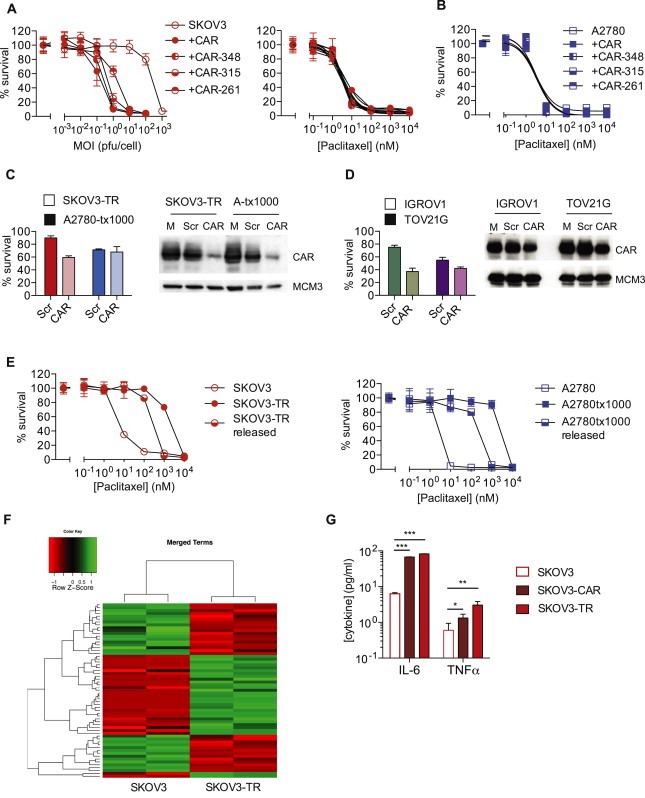Figure 4.

CAR expression increases inflammatory cytokine production but does not induce paclitaxel resistance. A. SKOV3 cells expressing full expressing full length CAR and CAR truncation mutants were infected with dl922‐947 (left) or treated with paclitaxel (right). Cell survival was assessed after 120 h (dl922‐947) and 96 h (paclitaxel). B. A2780 cells expressing full length CAR and CAR truncation mutants were treated with paclitaxel. Cell survival was assessed after 96 h. C. Twenty‐four hours following siRNA‐mediated CAR knockdown A2780tx1000, SKOV3‐TR, and D. IGROV1 and TOV21G cells were treated with paclitaxel (100 nM for A2780tx1000 and SKOV3‐TR, 1 nM for IGROV1 and TOV21G) for 96 h. Cell survival was assessed by MTT assay. E. SKOV3‐TR and A2780‐tx1000 were grown for 80 days in paclitaxel‐free medium. 96 h paclitaxel dose response curves were performed as previously. F. Gene expression in SKOV3 and SKOV3‐TR cells was assessed using GeneChip Human Genome U133 Plus 2.0 Arrays. Differential gene expression analysis was carried out using the O‐miner web tool and genes differentially expressed between the two cell lines were identified using limma. Using the GOStats package in Bioconductor, differential expression was assessed according to the GO terms ‘Inflammatory Response’, ‘Cytokine Activity’ and ‘Chemokine Activity’. G. Release of IL‐6 and TNF‐α from SKOV3, SKOV3‐CAR and SKOV3‐TR cells was assessed using Mesoscale MSD Discovery platform. *; p < 0.05. **; p < 0.01. ***; p < 0.001.
